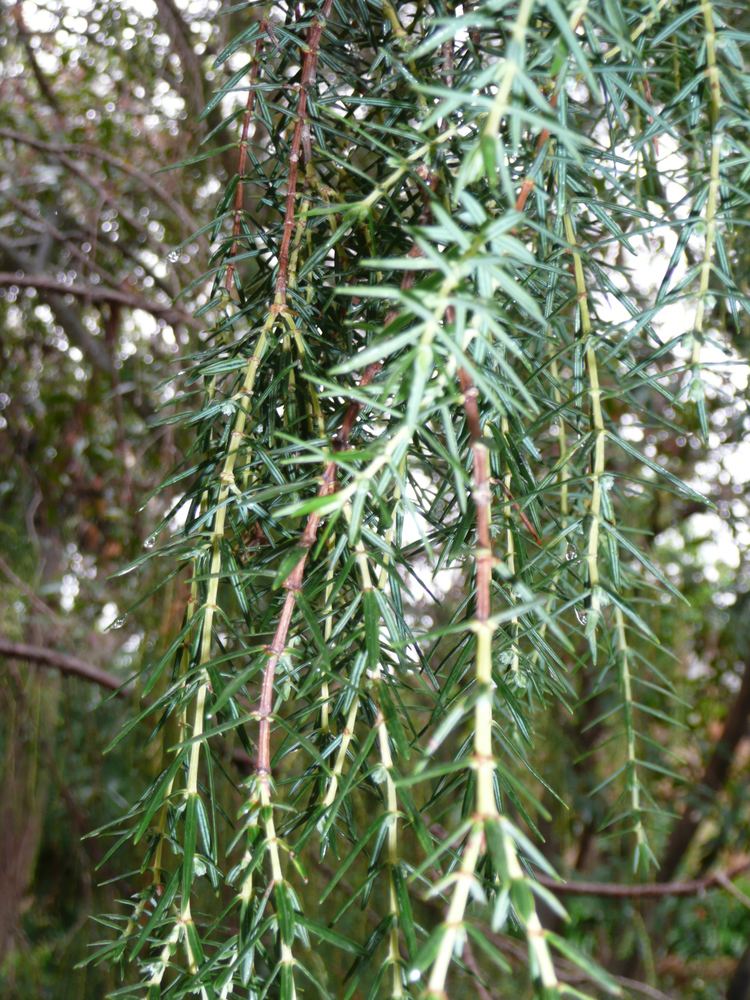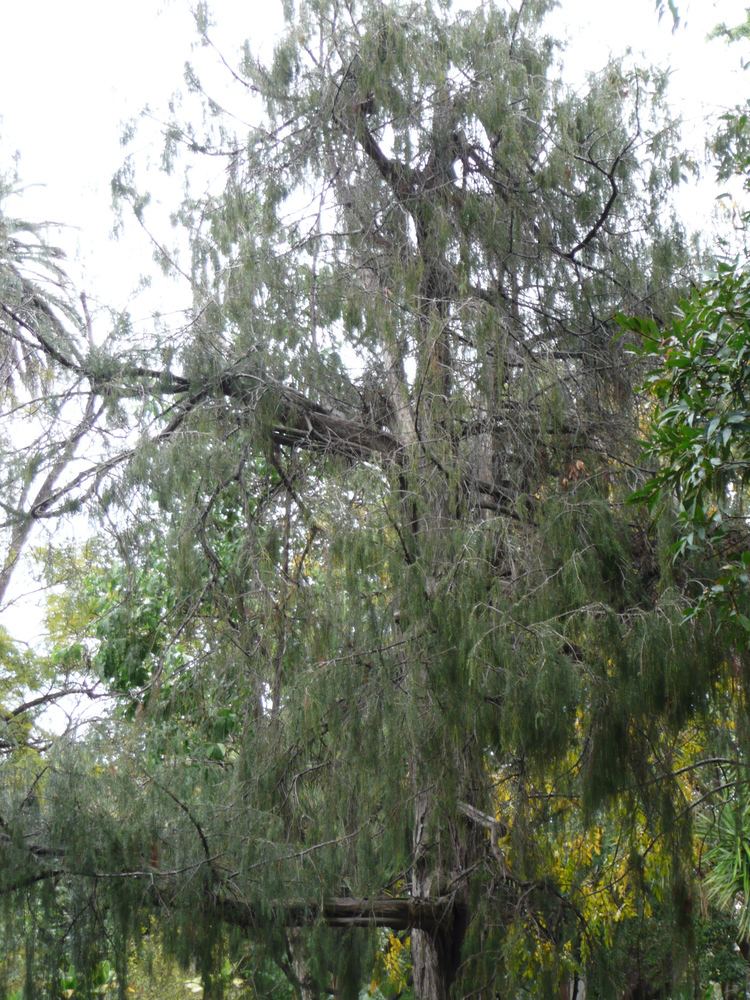Order Pinales Higher classification Juniper | Division Pinophyta Scientific name Juniperus cedrus Rank Species | |
 | ||
Similar Juniper, Juniperus brevifolia, Juniperus pseudosabina, Juniperus recurva, Juniperus bermudiana | ||
Juniperus cedrus canary islands juniper
Juniperus cedrus (Canary Islands juniper) is a species of juniper, native to the western Canary Islands (Tenerife, La Palma, Gran Canaria, Gomera) and Madeira (J. cedrus Webb & Berthel. subsp. maderensis (Menezes) Rivas Mart et al.), where it occurs at altitudes of 500–2400 m. It is closely related to Juniperus oxycedrus (Prickly Juniper) of the Mediterranean region and Juniperus brevifolia (Azores Juniper) of the Azores.
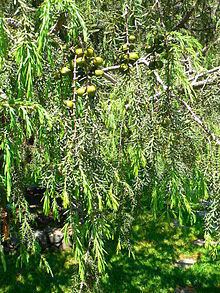
It is a large shrub or tree growing to a height of 5–20 m (rarely 25 m). The leaves are evergreen, needle-like, in whorls of three, green to glaucous-green, 8–23 mm long and 1–2 mm broad, with a double white stomatal band (split by a green midrib) on the inner surface. It is usually dioecious, with separate male and female plants. The seed cones are berry-like, green ripening in 18 months to orange-red with a variable pink waxy coating; they are spherical, 8–15 mm diameter, and have six fused scales in two whorls of three; the three larger scales each with a single seed. The seeds are dispersed when birds eat the cones, digesting the fleshy scales and passing the hard seeds in their droppings. The male cones are yellow, 2–3 mm long, and fall soon after shedding their pollen in February–March.
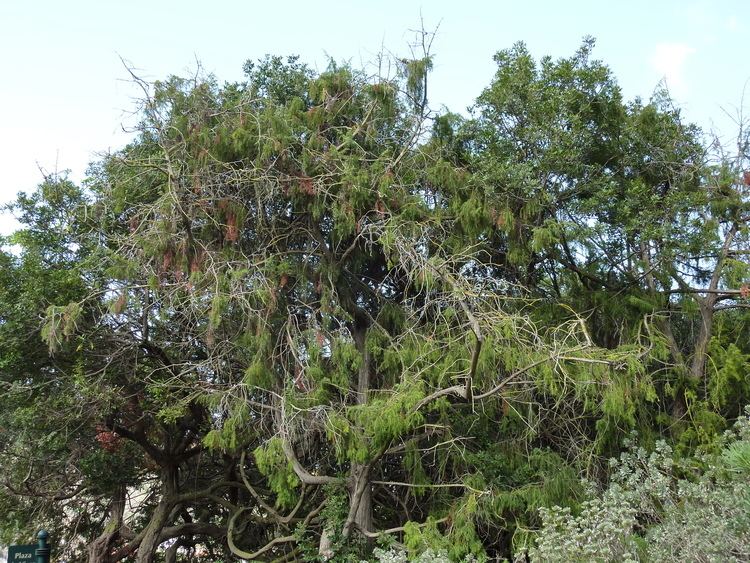
It is endangered in its native range due to a combination of historical felling for the valuable wood, and overgrazing by goats. It has been fully protected since 1953 and populations are very slowly recovering. Historical reports suggest trees up to 30 m tall occurred in the past; trees over 10 m are very rare now and confined to inaccessible cliffs.

It is occasionally grown as an ornamental tree in warm temperate climates, including New Zealand, the British Isles and California, but is not common in cultivation. There are also some small experimental plantations on the Canary Islands, where it has shown fast growth in good conditions, reaching about 14–15 m tall in 40 years.
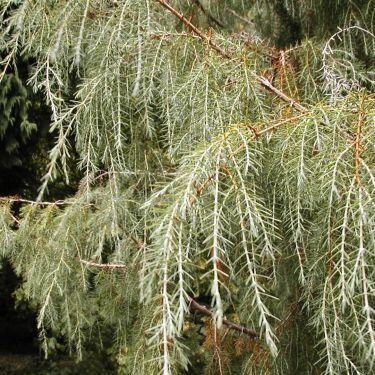
Extraction of the wood with acetone, followed by analysis of the extract, indicate that the essential oil of Juniperus cedrus is particularly rich in thujopsene, which comprises around 2.2% of the weight of the heartwood.

